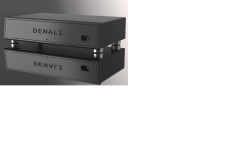Hi Caelin.
I have seen that my new 6000S2 has (unlike the 6000T) rubber inserts on the feet. I am thinking of buying a Daiza platform from Taiko Audio, and Emile insists there should be no rubber between the feet of the device and the Daiza. My question is, can you remove those rubber inserts, and if so how?
Regards
Emile is correct,
if your goal is to transfer energy
from the component
to the shelf.
This is what you can do with energy (vibration in this case): couple/transmit it, reflect it, diffuse it (change its frequency resonance), absorb it as heat. No system that consists of a component, shelf/support and footers interact using only one of these principles. It is always a mix of the above functions. So the primary question is usually, “Do you want to drain energy (couple) from the component to the shelf below or do you want to isolate the component from the underlying shelf”.
To answer this you want to know which is vibrating more than the other or which has a resonant frequency component that would likely be attenuated, diffracted or absorbed by the other. Usually the answer to this is that you want to couple energy from the component to the shelf. This assumes that the component is poorly dampened regarding internal vibration and that the shelf is likely a high-end type that has superior vibrational dissipating qualities. So essentially the shelf acts a drain of energy for the component.
Unlike most components, the Denali has had extensive attention to dampening both its internal parts and to dampening the exterior chassis. For this reason, unlike most components, the Denali works quite when it is decoupled (isolated) from the shelf.
What you are calling a rubber pad is not. It is a vibration absorbing polymer that attenuates micro-vibration. So, with most equipment racks or shelves the Denali will perform best with the feet fully intact as shipped from the factory.
However, there are some extremely sophisticated racks and shelves where the best performance could be gained by coupling the Denali directly to the rack. If you wish to do this simply peel the polymer pad (gently) off the bottom of the footer. This will give you a direct metal to wood contact patch. If you are careful with the removal you can put the polymer pad back at a later date. Be carful to not scratch your shelf. For those of you who are super tweakers, try putting a very thin sheet of TP or Kleenex between the metal foot and shelf. Most TP or tissues have multiple layers. Peel off a single layer of tissue to use under the footer. Try it.



